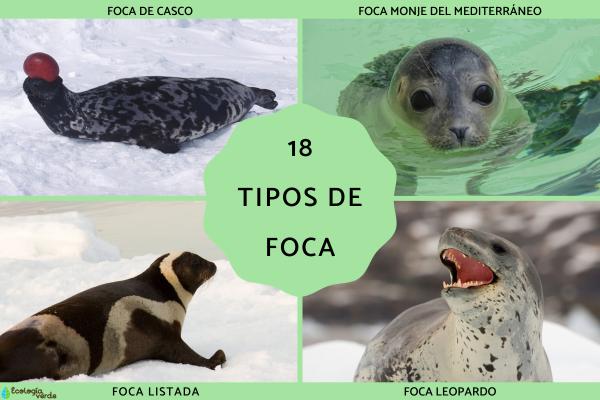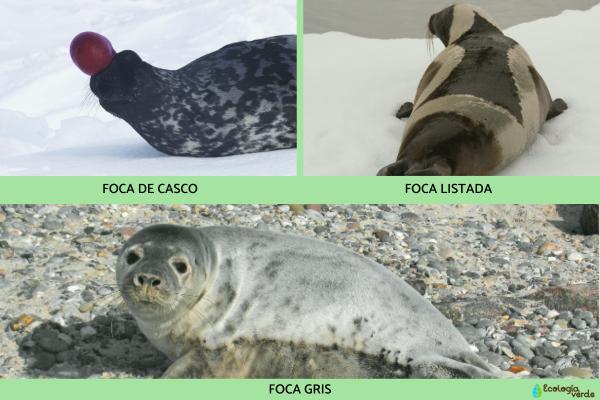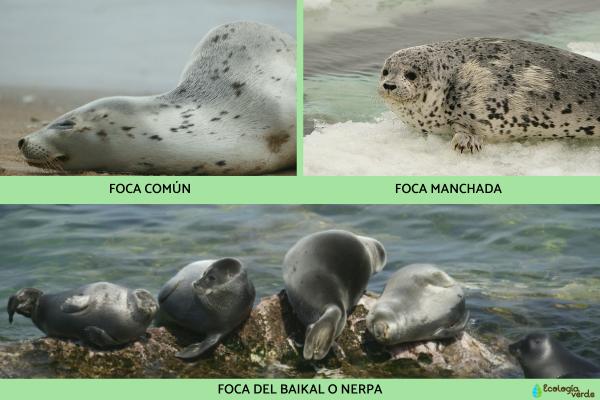There are many species of seals, including the northern seal subfamily (Phocinae) and the southern seal subfamily (Monachinae). In addition, there are common seals, gray seals, striped seals, Mediterranean monk seals, leopard seals, etc. Seals are typical animals of the coasts of cold regions. They are marine mammals, very well adapted to aquatic life, and they play a very important role in the food chain. In the Arctic, for example, polar bears feed mainly on seals. However, since they are also predators, they also help regulate lower trophic levels. There are different species or types of seals, each with its own unique characteristics. We invite you to read this article, in which you will learn about the different species of seals, their characteristics, and which species are in danger.

Seal Classification and Main Features
Northern Seals (Subfamily Phocinae)
Southern Seals (Subfamily Monachinae)
Other Common Seal Species
Endangered Seals and Main Threats
Conclusion: The Importance of Seal Conservation
Seals belong to the family Phocidae in the order Carnivora (suborder Caniformia, superfamily Pinnipedia). They are mainly divided into two subfamilies: Phocinae (northern seals) and Monachinae (southern seals).
Key Features:
Lack of external ear flaps (great underwater hearing).
Hind limbs evolved into flippers, poorly adapted for land movement.
Size varies by species; smallest ~60 kg, largest up to 3.5 tons.
Hydrodynamic body shape for efficient swimming.
Carnivorous diet: fish, cephalopods, crustaceans, and in some cases, small invertebrates via suction feeding.

Mainly inhabit the Arctic and subarctic regions; have well-developed claws.
Hooded Seal (Cystophora cristata):
Males have an inflatable nasal sac; gray-black skin with dark spots. Found in Greenland, Iceland, northern Norway.
Ribbon Seal (Histriophoca fasciata):
Black body with white stripes on neck, shoulders, and flippers; found in the Sea of Okhotsk and Bering Sea.
Gray Seal (Halichoerus grypus):
Gray with white spots, 2–3 meters long. Two subspecies: North Atlantic and Baltic Sea.
Harbor/Spotted Seal (Phoca vitulina):
Widest distribution of all seals; gray/white with spots; up to 2 meters; lives in the Pacific and Atlantic Oceans.
Spotted Seal (Phoca largha):
North Pacific and surrounding seas, medium-sized, dog-like snout.
Baikal Seal (Pusa sibirica):
The only freshwater seal, small and dark-furred, only found in Lake Baikal.

Distributed across the Southern Hemisphere, including tropical, temperate, and polar climates. Rear claws are much reduced.

Mediterranean Monk Seal (Monachus monachus):
Gray body with a white belly stripe, up to 2.5 meters, extremely endangered.
Southern Elephant Seal (Mirounga leonina):
Largest seal, males reach 5 meters, have a large nose, live around the Antarctic.
Leopard Seal (Hydrurga leptonyx):
Second largest Antarctic seal, streamlined, 2–3.5 meters long.
Crabeater Seal (Lobodon carcinophagus):
Lives in Antarctica, eats krill exclusively, 2–2.5 meters, turns almost white in winter.
Caspian Seal (Pusa caspica)
Ringed Seal (Pusa hispida)
Harp Seal (Pagophilus groenlandicus)
Hawaiian Monk Seal (Neomonachus schauinslandi)
Ross Seal (Ommatophoca rossii)
Bearded Seal (Erignathus barbatus)
Northern Elephant Seal (Mirounga angustirostris)
Weddell Seal (Leptonychotes weddellii)
Notable endangered seals:
Hooded Seal (Cystophora cristata): Vulnerable
Ribbon Seal (Histriophoca fasciata): Near Threatened
Caspian Seal (Pusa caspica): Endangered
Mediterranean Monk Seal (Monachus monachus): Critically Endangered
Hawaiian Monk Seal (Neomonachus schauinslandi): Endangered
Major Threats:
Hunting (for oil, fur), climate change (melting ice), pollution, reduced food sources, and habitat loss.
Seals are vital to marine food webs. Their survival helps maintain ecological balance. Legal protection, reduced human disturbance, and public awareness are crucial to safeguarding these marine mammals and their habitats for future generations.
animal tags: Earless seals
We created this article in conjunction with AI technology, then made sure it was fact-checked and edited by a Animals Top editor.